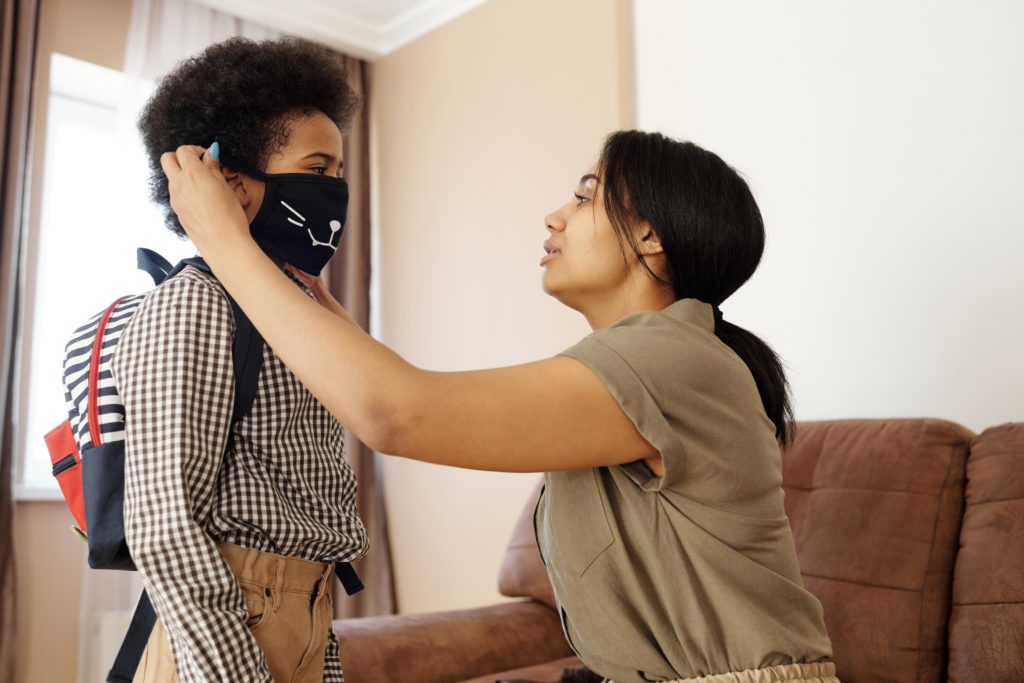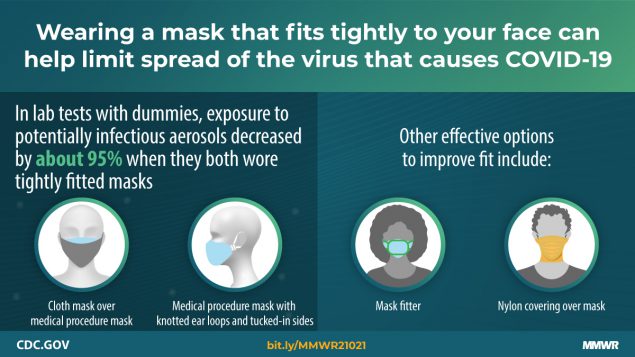Many of us believe we are protecting ourselves and curbing the spread of the COVID virus by wearing a mask, but new research from the global health protection agency, the CDC, has revealed that we may be only protected by half. That’s like going into a car with breaks that only work half of the time.
The CDC research has presented new ways to wear masks and how each method can bring you added protection. Photos included (see below).
The Masks v The Variants
Variants only evolve once the COVID virus gets into a human’s system and creates its own cocktail of suppressed immunity to the host (you). These ‘variant cocktails’ can then be spread to others making vaccines less effective, which just elongates lockdown measures. For these reasons, the CDC has conducted research on how mask-wearing could almost double our ability to stop the spread of the virus.

The Mask-Off
During January 2021, CDC conducted various experiments to assess two methods to improve medical procedure mask performance by improving fit and filtration: 1) double masking and 2) knotting and tucking the medical procedure mask (Figure 1).
FIGURE 1. Masks tested, including A, unknotted medical procedure mask; B, double mask (cloth mask covering medical procedure mask); and C, knotted/tucked medical procedure mask
One of the experiments assessed how effectively various mask combinations reduced the number of particles emitted during a cough.
The researchers simulated a person coughing by producing aerosols from a mouthpiece. Here’s what they found in terms of which masks and combination of masks were most effective:
The effectiveness of the following mask configurations to block these aerosols was assessed:
- A three-ply medical procedure mask alone
- A three-ply cloth cotton mask alone
- The three-ply cloth mask covering the three-ply medical procedure mask (double masking).
Results from the first experiment showed that the unknotted medical procedure mask alone blocked only 42.0% of the particles from a simulated cough, and the cloth mask alone blocked only slightly higher at 44.3%. However, the combination of the cloth mask covering the medical procedure mask (double mask*) blocked 92.5% of the cough particles.
*Double mask refers to a three-ply medical procedure mask covered by a three-ply cloth cotton mask.
When fitted with double masks or knotted and tucked masks, the cumulative exposure of the receiver was reduced 96.4% and 95.9% respectively.
A knotted and tucked medical procedure mask is created by bringing together the corners and earloops on each side, knotting the ears loops together where they attach to the mask, and then tucking in and flattening the resulting extra mask material to minimize the side gaps. Figure 1.

How to Check a Mask’s Fit
- Check for gaps by cupping your hands around the outside edges of the mask. Make sure no air is flowing from the area near your eyes or from the sides of the mask.
- If the mask has a good fit, you will feel warm air come through the front of the mask and may be able to see the mask material move in and out with each breath.
How to Improve Filtration
Another important step to increase the protection offered by your mask is to improve filtration. Masks capture respiratory droplets containing the virus when the wearer breathes out, blocking them from reaching the outside air and protecting others. They also serve as a barrier to protect the wearer by capturing respiratory droplets containing the virus breathed out by others, so that the wearer does not breathe them in.
A mask with improved filtration will stop more respiratory droplets containing the virus from getting inside your mask if others are ill or escaping from your mask if you are ill.
If you have any more questions you may want to check out this guide: Your Guide to Masks | CDC


